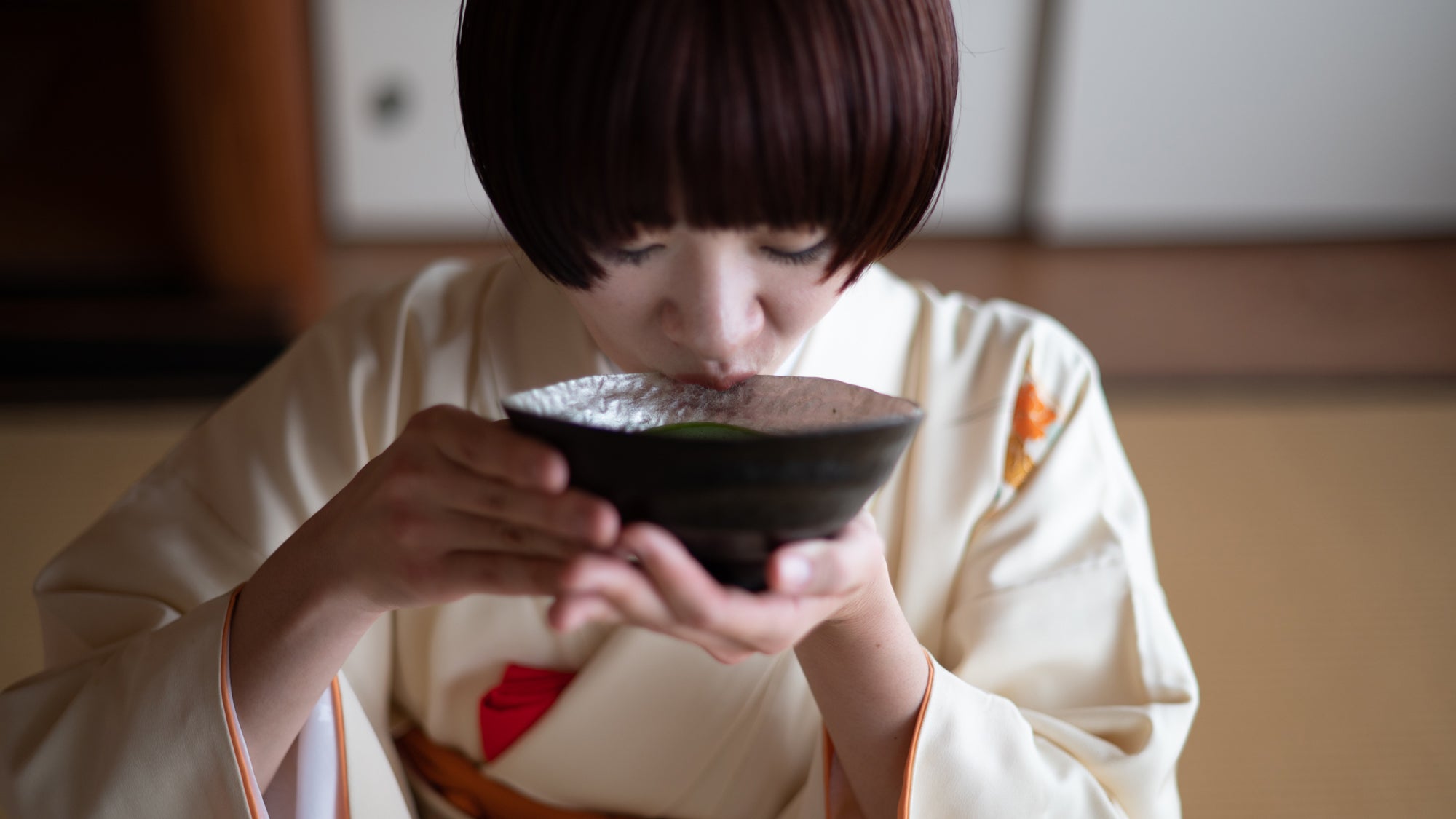
My First Chado Experience: Learning about Japanese Culture and the Essence of Hospitality
Written by Team MUSUBI
I have always held a great interest in chado*, "the way of tea." Chado not only teaches the intricacies of how to serve matcha tea, but also entails many aspects of Japanese culture such as etiquette, art, and traditional crafts, all of which have always intrigued me. But despite my curiosity for chado, I had yet to experience it firsthand. So when I was given the opportunity to participate in a chado lesson and tea ceremony, I eagerly seized the chance.
It was an incredible experience to take part in a tea ceremony for the first time with my colleague, Shirata-san. Let me share with you how we gained new insight about our culture and how we were welcomed with true hospitality.
*In Urasenke, "chado" is the word used to describe the way of tea or the Japanese style tea ceremony.
tables of contents
Ohara-an

Also, as a platform to deepen the understanding of traditional Japanese culture such as kintsugi and Japanese calligraphy, gatherings under the name "Gigeijuku" are held at this same venue and provide opportunities to participate in various cultural lectures and events.
Our Chado Sensei


Kimono Dressing for a Tea Ceremony

A Quick Lesson on Chado Etiquette
Accessories
Sensu (small folding fan): A sensu is considered as a visual representation of a boundary known as "kekkai" in the world of chado. Positioning the fan in front of you is a sign of respect to others as it signals that you will not infringe on their individual space.

Fukusa: A cloth used to wipe tools during a tea ceremony. In Urasenka, women carry a red fukusa. It is placed in the collar of the kimono.

Kaishi: Folded Japanese paper napkins used as a dish when eating sweets, and as a napkin. It is also placed in the collar of the kimono with the fold facing outwards.
Prior to our lesson, teacher Kitajima-sensei showed us her most treasured tea scoop. Three Chinese characters of "consider others above self" were handwritten on the lid of the tea scoop's box. These words serve as a reminder to always bear in mind the needs of others and represent the philosophy of Kitajima-sensei's chado class.

In the Tea Room
Njiri: The proper way to move within a tea room is by maintaining a kneeling position and moving by pushing with one's knuckles.

Tatami-beri (the rim of tatami mats): It is considered proper etiquette not to step on or sit on the fabric rims of a tatami mat.
Kitajima-sensei explained that back in the Edo period (1603 CE–1868 CE), families of samurai warriors would display their esteemed family crest on the fabric rims known as mon-beri (crest-rims). This crest signified the power of the family, and colors and patterns of the mon-beri held specific meaning. Thus, stepping on it was perceived as a major affront. As a result, any action that involved treading on the rims of tatami mats was strictly forbidden.
People may no longer share such values today, but it was interesting to discover the past significance of tatami-beri and learn about another aspect of chado tradition.
Admiring the decor upon entering the tea room, guests move to the alcove to see the decorations set up by the host. Guests admire its beauty and feel the hospitality of the host.

Silence
The Tea Ceremony
Entering


Japanese Sweets


Drinking Matcha Tea


First, bow before drinking the matcha tea.



The tea prepared by Kitajima-sensei was completely different from any matcha tea I had ever had. The fineness of the froth, its lightness, the aroma of the matcha, its sweetness, its smoothness as it passed down my throat - everything was a first-time experience.
A Special Treat
As guests, we were privileged to receive delicious matcha tea from our host, Kitajima-sensei. But to partake in the making of matcha tea was a special chance to really appreciate how hospitality was shared through chado. We were also able to observe mindfulness as it was invoked in the gestures and movements of making matcha tea.
Kitajima-sensei taught us the basic steps such as how to correctly hold a hishaku and how to properly place the matcha into the matcha bowl. Each gesture is carried out to make the guests feel comfortable and welcomed.


There is actually a step where the host holds the hishaku as if it were a mirror. This is called kagami-bishaku meaning "mirror ladle." The host focuses by finding the reflection of his or her heart in the hishaku, and is one of the many steps used to find clarity during a tea ceremony.

Reflections

The most memorable aspect of our lesson was experiencing Japanese hospitality through chado. During our time at Ohara-an, Kitajima-sensei graciously welcomed the two of us into her world of chado. I recall how she added a small scoop of water to the pot of hot water before she started her tea-making. It was a slightly hot day and we were both feeling a bit flushed. Her attention to detail to make us feel comfortable was truly inspirational. We discovered that chado puts its emphasis on hospitality, where the host strives to create a warm and welcoming environment for the guests.
If you ever have an opportunity to try chado, I strongly recommend you give it a try. Chado can serve as a gateway to understanding the essence of Japanese culture and the art of hospitality. Enjoy a tasty cup of matcha tea with Japanese sweets, and experience firsthand the warm welcome and comfort of chado.







Leave a comment
This site is protected by hCaptcha and the hCaptcha Privacy Policy and Terms of Service apply.